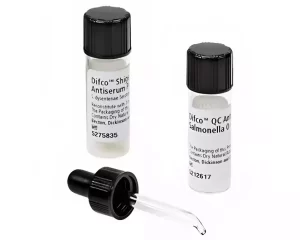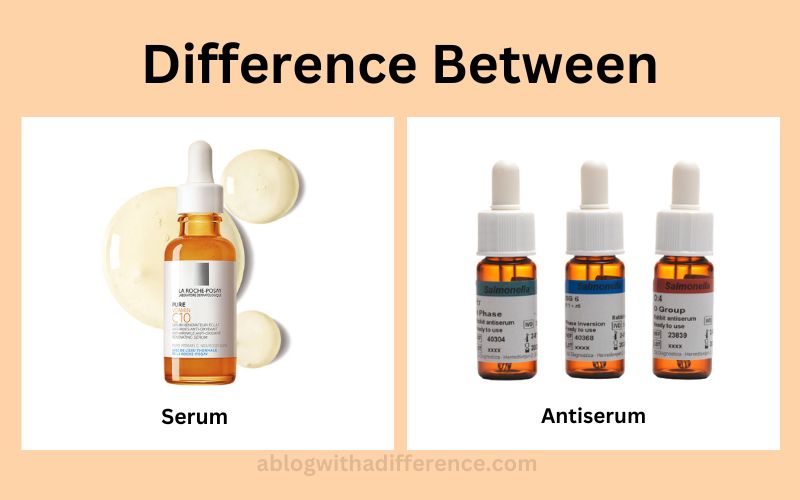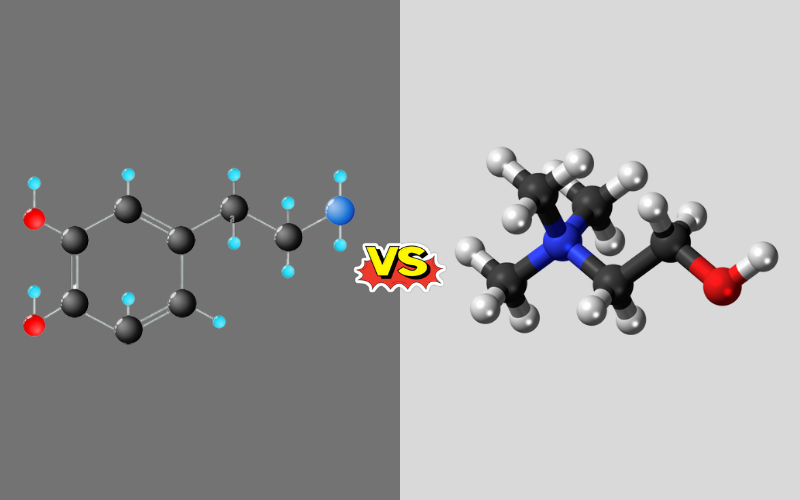Difference Between Serum and Antiserum
Brief Overview of Serum and Antiserum
Antiserum differs from serum in that serum is composed of non-blood cells or clotting factors; antiserum, however, contains antibodies from an animal vaccination or human vaccination process and acts as an antibody-rich source.
Blood is an intricate bodily fluid which circulates throughout our bodies to deliver essential substances such as oxygen and nutrition to cells while eliminating CO2 waste from metabolic processes in our cells. Blood comprises various elements such as plasma, red blood cells white blood cells as well as platelets.
Plasma is the straw-colored liquid portion of blood, containing factors for clotting. Serum, on the other hand, is pure plasma without this clotting factor and therefore does not coagulate or clot; instead it forms a solution of water and other dissolved substances such as hormones, electrolytes, antibodies etc.
Antiserum is a special type of serum produced from immunized animals that provides passive immunity against various antigens. Antiserum contains antibodies to combat these particular threats.
Importance and applications of Serum and Antiserum
Serum and Antiserum play an indispensable role in diagnosis, medicine and research.
Their importance and applications can be summarized as follows:
1. Serum:
Diagnostic Applications: Serum is widely utilized as a diagnostic test in clinical laboratory tests, where its diagnostic capabilities include biomarker detection such as hormones, enzymes, antibodies and proteins that can help identify or track various diseases.
Diagnosing Disease: Serum analysis can be an effective means of diagnosing various conditions; specifically heart attacks can be identified using cardiac enzyme levels while tumor markers could indicate there is a cancerous condition present.
Therapeutic Applications of Serum Therapies: Serum therapies utilize serum-derived items like immunoglobulins to provide passive immunity against an autoimmune condition or infectious illness.
Biomarker Research and Discovery: Serum can be an excellent way for researchers to explore disease mechanisms, identify biomarkers and test treatments.
2. Antiserum:
Antiserum for infectious Diseases: Antiserum is a highly specific collection of antibodies designed to neutralize pathogens like viruses or bacteria and assist with managing infections such as rabies or snakebite outbreaks quickly and effectively.
Passive Immunization: Antiserum may be administered to those exposed to specific diseases or toxins in order to provide some short-term protection – this process is known as passive immunization and often used against ailments like Hepatitis or Tetanus B.
Toxin Neutralization: Antiserum can effectively mitigate the harmful effects of certain toxins produced by organisms, including botulinum toxins or snake venom. By binding with and binding to this toxin, antiserum prevents its harmful impact from being unleashed upon the environment.
Immunizations: Antiserum can sometimes be used as an effective immunization technique when rapid immunity response is essential, by injecting already formed antibodies which provide instant protection from specific pathogens.
Knowledge of Serum and Antiserum is important for healthcare providers, researchers, and healthcare systems alike. These components play a pivotal role in diagnostics, therapy, research and advancements within medicine – ultimately contributing to improved patient care and medical advances.
What exactly is Serum?
Serum is the fluid component of blood that forms after it has undergone coagulation, or in simpler terms it is blood plasma which does not contain clotting factors. In simple terms it could be said that serum is blood plasma which does not clot.

Therefore, serum is less in quantity compared to blood plasma and does not contain fibrinogen. Extracting serum involves centrifuging blood that has become coagulated; blood’s primary constituent is water.
Electrolytes, antigens, antibodies minerals dissolved protein carbon dioxide hormones, etc all form part of the serum’s composition; generally, its concentration is around 1.024g/ml which makes it an invaluable component for determining blood groups and other disorders of blood.
What exactly is antiserum?
Antiserum is an antibody-rich blood product produced through immunizing an individual against specific antigens – these could include infectious organisms or toxic substances.
Antiserum can provide inactive immunity against diseases or poisons by creating antibodies against their antigen. Animals such as horses sheep and rabbits are often useful sources of antiserum however, Human antiserum may be more effective because it doesn’t trigger allergies and other allergic reactions.

Antiserum is most frequently used as an Antivenom treatment for snake bites however, it can also act as an antitoxin.
Comparison Chart of Serum and Antiserum
Here’s a comparison chart which highlights the major distinctions between Serum and Antiserum:
| Aspect | Serum | Antiserum |
|---|---|---|
| Definition | The blood’s fluid component after the clotting process. | The product is derived from blood and contains specific antibodies |
| Composition | Proteins, water, electrolytes hormones, biomarkers, and water | Antibodies and proteins (such like albumin) |
| Source | Human blood | Blood from animals that is infused with antibodies |
| Diagnostic Use | Analysis of biomarkers, monitoring for disease and therapeutic applications | Serological assays, detection of pathogens assays, blood typing |
| Function | Transport of substances as well as immune responses and homeostasis | Pathogen neutralization, passive immunity, toxin neutralization |
| Specificity | Biomarkers are not always specific The interpretation of biomarkers is dependent on the medical context | Particularly the antigen that is that is used for immunization |
| Limitations | Limits of specificity, fluctuating biomarker levels, the risk of false positive or false-negative results | The risk of adverse reactions, a short shelf life Ethics concerns |
| Production | Blood collection, clotting centrifugation | Animal immunizations, production of antibodies and separation of serum |
Similarities Between Serum and Antiserum
Both Serum and Antiserum possess unique features.
There are several similarities between both products:
1. Blood-Derived: Serum and antiserum both come from blood. Serum can be produced by allowing blood to clot, then extracting its liquid part for separation; antiserum comes from animals immunized against specific antigens.
2. Contain Proteins: The serum and antiserum both contain proteins. Serum provides a wealth of proteins such as albumin fibrinogen, globulins and immunoglobulins antiserum contains antibodies belonging to an Immunoglobulin family of proteins.
3. Diagnostic Applications: Antiserum and serum are diagnostic in nature in medicine, used for both biomarker analysis in clinical laboratory tests as well as serological antibody identification tests used to identify pathogens causing infections or blood types in individuals’ serum samples.
4. Immunological Function: Serum and Antiserum play an integral part in developing immune responses. Serum provides Immunoglobulins (antibodies) which neutralize foreign compounds known as antigens antiserum is composed of antibodies designed specifically to neutralize these foreign compounds or provide temporary protection from them when administered to people.
5. Researchers and Therapeutic Applications: Serum and Antiserum are widely utilized for both research and therapeutic applications. Serum samples are typically utilized by laboratories to investigate biomarkers, disease mechanisms and drug effects; while antiserum can serve as passive immunization protection against pathogens or toxins.
Though Serum and Antiserum share some similarities, it’s crucial to comprehend their distinct functions, characteristics, and uses. Understanding their distinctions helps in using them effectively for diagnosis and therapy purposes.
Function and Mechanism of Action
Function of Serum:
1. Transport: Serum acts as a medium for carrying diverse substances throughout the body, such as electrolytes, nutrients, hormones and waste products.
2. Immune Response: Serum contains Immunoglobulins (antibodies) which play an essential role in your immune response by identifying and neutralizing foreign substances like viruses bacteria or toxic materials that pose as threats.
3. Homeostasis: Serum regulates electrolytes and other key elements within the body to maintain overall stability and functionality within its systems.
4. Biomarker Source: Serum contains biomarkers which can help determine the progression or severity of illnesses, providing crucial data in diagnosing, prognosticating and monitoring various ailments.
Mechanism of Action of Serum:
Serum’s mechanism for action relies upon its individual components working in collaboration to fulfill their roles. Of particular note is serum antibodies’ role as part of our immune system in protecting against pathogens entering our bodies; when pathogens do enter, serum antibodies bind with specific antigens found on surface pathsogens to bind effectively thereby killing or neutralizing them quickly and defending us against infection.
This process may result in:
1. Neutralization: Antibodies can neutralize pathogens by binding to them and stopping their entry and spread into cells and inflicting harm, thus stopping disease-causing pathogens from invading host cells and impeding reproduction.
2. Opsonization: Antibodies have the ability to target pathogens for destruction through the system of defense. They attach to pathogens, making them more easily identifiable to immune cells like phagocytes that will take on and eliminate them.
3. Activation of the Complement System: Antibodies may activate the system of complement, which is composed of proteins that aid immunity. Deactivating it could lead to pathogen destruction (rupturing) or infiltration by immune cells at its site of infection.
Function of Antiserum:
Antiserum’s primary role is to provide specific antibodies against an antigen. Other benefits of using Antiserum:
1. Antiserum for Pathogen: Neutralization contains antibodies which specifically recognize pathogens and neutralize them, binding antigens on their surface to stop infecting cells or inflicting damage.
2. Active Immunity: Antiserum can provide temporary protection to those exposed to certain pathogens. Antiserum’s antibodies act quickly until the person’s own immune system develops its own responses against such threats.
3. Toxin Neutralization: Antiserum can contain antibodies that neutralize toxins produced by various organisms, such as snake venom or bacteria. These antibodies bind directly with poisons that have already been administered, rendering them useless and rendering the dose ineffective.
Mechanism of Action of Antiserum:
Antiserum works by targeting specific antibodies that bind with antigens of interest, giving patients access to antibodies with binding power for targeted treatments.
1. Bind to Antigens: Recognizing and Attaching Antigens antibody produced for an antiserum is designed to recognize and bind with specific antigens in its host’s system, possibly altering their function or interfering with interactions between host cells or signalling it as a target for destruction. This binding could disrupt their interactions or have any other impact upon antigen function and interaction or signal destruction of it as an antigen target.
2. Neutralize Toxins and Pathogens: Antiserum’s antibodies can neutralize pathogens or toxic substances by binding to them directly, which will stop spreading infection while diminishing symptoms.
3. Provide temporary protection: If administered to those suffering from a condition, antiserum can provide instant, temporary protection in the form of preformed antibodies that provide instantaneous immunity – helping bridge any gap until their own immune systems start producing more of its own antibodies and create protective barriers on its own.
Understanding the roles and mechanisms of antiserums and serums is vital for their proper application in diagnostics and treatments.
Medical and Diagnostic Applications
Serum and antiserum have significant applications in the field of medicine and diagnostics.
Medical Applications of Serum:
1. Clinical Laboratory Testing: Serum for Clinical Laboratory Testing is widely utilized by laboratory professionals for the evaluation of various biomarkers and parameters, such as glucose levels. Liver function tests, kidney function tests, electrolyte concentration levels, hormone concentration levels and electrolyte metabolism levels may all be tested as part of clinical laboratory analyses.
2. Diagnosis: Serum analysis plays a vital role in diagnosing and monitoring illness. Serum biomarkers can identify specific diseases or provide valuable insight into disease progression; for instance cardiac enzymes are tested in serum to identify myocardial infarction while tumor markers help identify certain cancers.
3. Therapeutic Applications: Products made of serum such as immunoglobulins are often utilized to combat immune deficiencies, autoimmune conditions and various diseases. When given intravenously they replace missing antibodies within a patient’s serum.
Diagnostic Applications of Antiserum:
1. Diagnostic Tests for Infectious Diseases: Antiserum can be utilized as part of diagnostic assays that detect specific pathogens present in one area. These assays, known as serological assays, measure antibodies produced by an individual in response to infection; antiserum with specific antibodies against that pathogen may serve as a guide in order to detect those present within their serum sample.
2. Identification of Pathogens: Antiserum for Pathogen Identification is an invaluable aid in the search for pathogens. By testing serum from patients against various antiserums and antibodies, medical experts can quickly and effectively pinpoint antigenic qualities associated with any disease-causing agents that might have entered their bodies through contact.
3. Blood Typing: It essential in blood typing, used to detect antigens on red blood cells that could reduce adverse reactions during transfusions. With this information in hand, donors and recipients can be matched appropriately so as to minimize any possible negative interactions or allergic reactions during blood transfusion.
Antiserum and serum are indispensable tools in medical diagnostics. They provide crucial data that help healthcare providers monitor, diagnose, and tailor treatment plans accordingly for their patients’ wellbeing and identify any abnormalities that arise – crucial tools in healthcare analysis!
Risks and Limitations
Antiserum and Serum can play a vital role in diagnosis and medicine however, it’s also important to be aware of their potential risks and limitations.
Risks and Limitations of Serum:
1. Contamination: Serum may become infected with viruses or bacteria during storage and treatment processes, making proper handling, storage and treatment essential to avoiding contamination risks.
2. Limited Specificity: Serum biomarkers may not be specific enough. Because biomarkers may not be specific enough for certain situations, any changes or spikes could potentially appear across multiple environments causing difficulties with diagnosis and interpretation of results.
3. The Dynamic Nature of Biomarkers: The levels of serum biomarkers may fluctuate over time, so it’s essential that results are interpreted according to both time of collection and medical context.
4. False Positive and False Negative Results: Serum-based tests may produce false-positive or false-negative results that lead to inaccurate diagnoses or treatment recommendations, possibly due to technical mistakes during sample handling or interference from other medications. Such errors could also contribute to inaccurate diagnoses.
Risks and Limitations of Antiserum:
1. Reactions to Antiserum Use: Antiserum can cause mild to severe allergic reactions that could include anaphylaxis rash, fever or serum sickness in some Individuals. Therefore it is advised that it be administered carefully with constant monitoring.
2. Shelf Life Limits: Antiserum has a finite shelf life and could become less effective over time, so to preserve its potency it must be stored in an environment with temperature controls to preserve its potency.
3. Limited Specificity: Antiserum has an antigen to immunize against, which might not work against variants or strains of pathogens that differ from its target antigen. Therefore, updating antiserum formulas regularly to stay ahead of any emerging threats is key to ensure their effectiveness against evolving pathogens.
4. Ethical Considerations: Antiserum production often necessitates animal use for vaccination purposes. Therefore it is crucial that ethical Considerations be considered so as to ensure animal well being and humane treatment of animals involved.
Healthcare professionals must understand the potential dangers and constraints imposed by antiserum and serum testing. A proper analysis of test results, adhering to accepted procedures and regulations are all essential in minimizing risks while optimizing benefits from these diagnostic tools.
Conclusion
Serum and Antiserum are essential elements in medical diagnosis and medicine due to their unique properties, functions and applications. Serum is the liquid component of blood which plays an essential role in diagnosis, monitoring of disease as well as treatment.
Its composition includes electrolytes, proteins hormones, antibodies that support body functions as biomarkers of disease detection; while antiserum comes from animals who have been immunized against specific antigens and is used for targeted treatments, passive immunization or neutralization of toxic substances.


